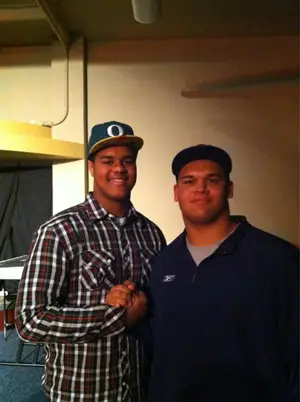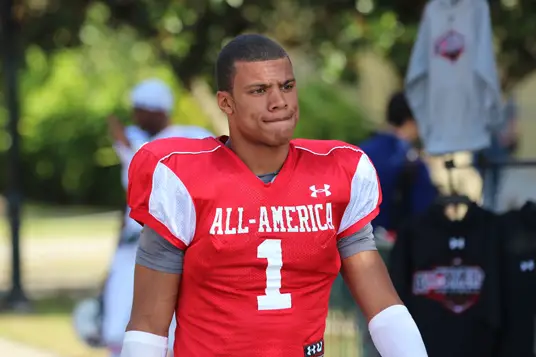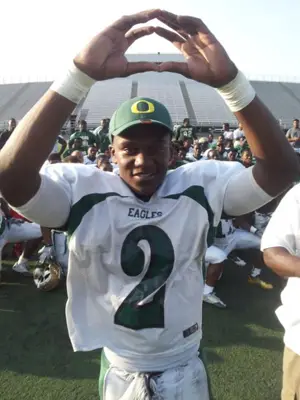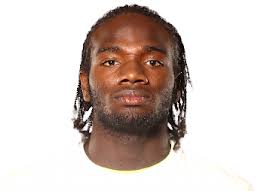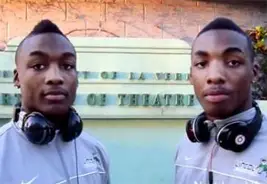This multi-week series will attempt to take a reasonable, logical and unbiased look at Oregon’s recent recruiting successes and failures while analyzing the program’s recruiting philosophy under Chip Kelly. The series will then look at how that philosophy already has and may continue to evolve under Mark Helfrich before ending with a detailed breakdown of the author’s ideal recruiting blueprint.
Most veteran followers of Oregon football recruiting will tell you that the 2013 cycle was the strangest and most confusing that they’ve ever witnessed. In an age with more recruiting coverage than ever before (Oregon football has four dedicated recruiting websites), it’s an oddity that the strategic waters were so muddy last year. Some claim that the coaches have no desire to unveil their philosophies, but when there’s so much access to the recruits themselves – who can give first-hand accounts of their interactions with coaches – a staff’s strategic vision usually becomes clear over time. This past year, that was not the case.
Usually, when it comes to Oregon recruiting debates, of which there are many, there are two distinct positions. But ask the question, “What happened last year?” in any Oregon recruiting forum and you’ll notice that there aren’t two such positions; there are 50. Why is that? Well, basically, no one really knows; and given the multitude of information available, that’s incredible. The next couple of articles in this series will contain an analysis of what exactly happened and look at many of the different possibilities. This article isn’t about what we don’t know, however. This article is about what we do know; what actually happened in the 2013 cycle.
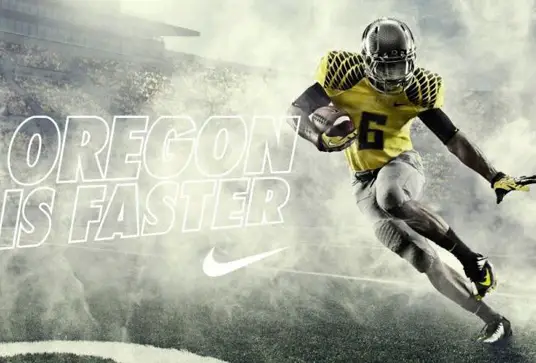 In the spring of 2012, the Oregon program was flying high. Coming off of a National Championship appearance and Rose Bowl victory in consecutive years, the Ducks were arguably the hottest program in the nation. Combine that success with being the country’s “sexiest” team and you’ve got the attention of the majority of elite high-school football players. Whether it was the Nike connection, the beautifully flashy uniforms or the most explosive offense in college football, it seemed like every recruit loved something about Oregon.
In the spring of 2012, the Oregon program was flying high. Coming off of a National Championship appearance and Rose Bowl victory in consecutive years, the Ducks were arguably the hottest program in the nation. Combine that success with being the country’s “sexiest” team and you’ve got the attention of the majority of elite high-school football players. Whether it was the Nike connection, the beautifully flashy uniforms or the most explosive offense in college football, it seemed like every recruit loved something about Oregon.
In recruiting circles, most fans were very excited. Oregon had never garnered so much attention from so many blue chip recruits. At the same time, veterans of the recruiting game – let’s call them “rec-heads” for simplicity’s sake – were tempering expectations by reminding everyone that the most important factors contributing to recruiting success (location, tradition, and NFL talent production) weren’t in Oregon’s favor, no matter how sexy the program. Nonetheless, even the most hardened realists had trouble containing their excitement when it became apparent that a player by the name of Eddie Vanderdoes was leaning towards a commitment to Oregon.
Eddie Vanderdoes was a popular name on Oregon recruiting boards dating back to 2011, when the stud defensive tackle began talking about his serious interest in the program. When a picture of Vanderdoes standing next to his close friend Arik Armstead at the latter’s announcement ceremony emerged, the internet almost broke. Word started spreading that Vanderdoes and Armstead made a pact to play together. Armstead told ESPN’s Brandon Oliver that no matter what happened, Vanderdoes would end up a Duck. When Vanderdoes visited Oregon for the 2012 Spring Game, many thought a commitment was imminent. That commitment never came.
There were many theories as to why Vanderdoes and Oregon parted ways. Some said that it was because Chip Kelly wouldn’t let him play baseball. Others said that Jerry Azzinaro insisted on Vanderdoes playing nose tackle in Oregon’s defense, while Vanderdoes wanted to be a defensive end. People even claimed that Vanderdoes didn’t want to play in a 3-4 defense. Since signing day, more information has come out regarding why Vanderdoes chose to take his talents elsewhere; but when it all went down, there was a lot of misinformation. Even people “in the know” couldn’t agree on what had happened. Was it Vanderdoes who moved on or was it the coaches? Was the 3-4 defense really the problem or was it the position Azzinaro was asking Vanderdoes to play? Why wouldn’t Chip Kelly let him play baseball? There were a lot of unanswered questions, and a lot of confusion. ”Vander-gate”, as it has since been called, simply foreshadowed what was to come.
By late summer, Oregon fans were in good spirits. Most had come to terms with the commitment Eddie Vanderdoes had made to USC in early July. A promising season was on the horizon, and commitments from high profile players like Thomas Tyner, Dontre Wilson, Evan Voeller and Darren Carrington had hopes for the 2013 class soaring. There was a small minority of rec-heads, however, who were more than a little uneasy.
As spring turned to summer, it became apparent to most rec-heads that much of the interest Oregon was receiving early on had waned. The reason? Oregon coaches simply weren’t showing interest in very many prospects. There were countless debates about why that was. Some claimed that the coaches were simply taking their time with player evaluations. Others said that the staff was focused on the season ahead, not recruiting. A few even suggested that the coaches were lazy, if only to point out their own frustration with the significant number of elite players claiming they wanted to hear more from Oregon. Regardless of why the staff chose to show interest in such a relatively small number of recruits, many with early interest had moved on by late summer.
*Note that the aim of this article is to look at what actually happened during the 2013 cycle, not to analyze. The analysis will come in future articles.*
Once the season got going and it became clear that Oregon was, once again, a legitimate National Championship contender, it was a bit surprising to see recruiting remain so low key. Compared to other PAC-12 programs like USC, UCLA and Washington, there weren’t many official visitors during the regular season, spanning from early September to early December, and only three commitments. By mid-December, there was a lot of uncertainty. Fans and recruits alike were unsure whether Chip Kelly would be back. It was unclear how many relationships Oregon coaches had built and maintained. Who would fill out the class? Who was left on their big board? Who did the coaches covet, if anyone? High profile tier-1 players like Max Redfield and Gareon Conley, among others who had seemingly serious interest in the program, had been turned away. Bridges had been burned. Anyone who claims they had any idea what would happen in the ensuing months is lying. No one had a clue.
It was the 2nd week of January, and Oregon fans were holding their collective breath. The Ducks had just come off of their fourth consecutive BCS bowl game appearance and a Fiesta Bowl victory, finishing the year with a #2 national ranking, tying the school’s highest ever. Everyone was waiting to see what Chip Kelly would do. Would he bolt for the NFL as expected or opt to, once again, stay at Oregon? Despite the general consensus among the “experts”, Oregon fans held on to a slim thread of hope. Singer and Eugene native Mat Kearney even made a song entitled “Chip Don’t Go”, which registered over 100,000 views on YouTube in 48 hours. The song was so good that Chip decided to stay, to the elation of not only Duck fans, but also recruits across the country.
After such an odd year of recruiting, Chip Kelly’s flirtation with the NFL in early January changed expectations. Instead of wanting that elusive “dream class”, rec-heads were just hoping to hang on to the players who’d already committed. When it was announced that Kelly was staying at Oregon, commits voiced their pleasure and for the first time in a long time, there was a sense of recruiting stability. In the eyes of many, Oregon was now playing with house money. Any additional commits were just gravy, and all was well. That was, until 10 days later.
When reports surfaced that Chip Kelly was heading to Philadelphia, the stability that had been present just a week earlier turned to utter chaos. For that next week, it looked like Oregon’s 2013 class was going to fall apart. With only a couple of weeks until National Signing Day, opposing coaches surrounded Oregon commits like a pack of hungry wolves. Dontre Wilson, Darren Carrington and the Robinson twins all announced plans to visit a number of other schools, something that was particularly significant because this wasn’t allowed under Chip Kelly. Recruits knew that the remaining Oregon staff was powerless to stop them.
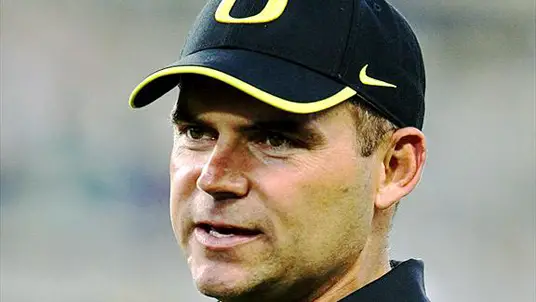 The week following Chip’s surprise departure was a hard one for everyone connected to the program. It was especially difficult for the coaches who were left to salvage the 2013 class. No new head coach had been officially named. No one really knew (and still doesn’t) what kind of impact Kelly’s departure would have on wins and losses. How much of the culture would leave with Chip? Would a #WTD attitude remain? Would Oregon remain among the nation’s elite programs? For a long, mission-critical week, Oregon was a program without an identity.
The week following Chip’s surprise departure was a hard one for everyone connected to the program. It was especially difficult for the coaches who were left to salvage the 2013 class. No new head coach had been officially named. No one really knew (and still doesn’t) what kind of impact Kelly’s departure would have on wins and losses. How much of the culture would leave with Chip? Would a #WTD attitude remain? Would Oregon remain among the nation’s elite programs? For a long, mission-critical week, Oregon was a program without an identity.
The day that Mark Helfrich was announced as the new Head Coach changed everything. He assured everyone that the Oregon football program was never about one man. He let people know that almost everything would remain the same. He answered questions with a poise and confidence that reassured many. He also let everyone know that his immediate priority was putting together a solid 2013 class. After his introductory press conference was over, Helfrich immediately embarked on a legendary recruiting road-trip that will forever mark the first chapter of his legacy as an Oregon head coach.
Instead of going on the defensive, Helfrich and his coaches did what Oregon does best: attack. Helfrich took a group of seven coaches around the country, visiting Oregon commits and assuring them that the program remained, that it was never about Chip Kelly, but about Oregon football. The national tour was a huge success. Darren Carrington, the Robinson twins, and Thomas Tyner all stuck with Oregon. Under Helfrich, the staff was able to keep the entire class together; with one major exception: Dontre Wilson.
Losing Wilson hurt. He had been committed since the prior spring and by all accounts, was a truly special player, a perfect fit for Oregon’s offense. Ultimately, Urban Meyer and Ohio State were able to flip the talented running back at the 11th hour, despite a steady stream of quotes from his father that he was “all Duck.” Helfrich and company did a good job of re-recruiting him after Chip’s departure, and Wilson’s relationship with RB coach Gary Campbell was unparalleled, but it wasn’t enough. Urban Meyer was too good and proved, once again, that he’s one of the best recruiters in college football, at Oregon’s expense.
With Wilson in the rear-view, National Signing Day arrived. After holding Oregon’s class together, Helfrich and company were able to pick up huge commitments from tier-1 offensive lineman Cameron Hunt and tier-1 OLB/DE hybrid Torrodney Prevot, who picked Oregon over USC, a school he’d been committed to for months. Oregon also signed tier-1 receiver Devon Allen, who was actually glad Chip Kelly left because it meant getting a scholarship offer. Being able to keep the pre-departure class together AND add a few more significant pieces was Helrich’s first big win as a head coach. Fans and media heaped praises on Helfrich and his staff for the class they were ultimately able to land in the wake of the Chip Kelly situation.
Looking at the final recruiting rankings, Oregon finished 16th on 247 sports, 17th on Scout and 22nd on Rivals. Using the tier-system created a couple of years ago, here’s a look at Oregon’s class:
Tier E: Thomas Tyner RB
Tier 1: Darren Carrington WR
Tier 1: Devon Allen WR
Tier 1: Evan Voeller OL
Tier 1: Cameron Hunt OL
Tier 1: Torrodney Prevot DE
Tier 1: Tyrell Robinson LB
Tier 1: Danny Mattingly LB
Tier 1: Tyree Robinson DB
Tier 2: Johnny Mundt TE
Tier 2: Chris Seisay DB
Tier 3: Juwaan Williams DB
Tier 3: Damion Hobbs QB
Tier 3: Kani Benoit RB
Tier 3: Doug Brenner OL
Tier 3: Elijah George OL
Tier 3: Jake Pisarcik OL
Tier 3: Matt Wogan K
It’s hard to find a fan who wasn’t happy with how the class turned out. Whether it (and future classes) would have been better or worse had Chip Kelly remained is an interesting debate and this series will look at the philosophical differences between Helfrich and him in regard to recruiting. Next week, however, Part 2 of this manifesto will look at what went wrong during the 2013 cycle and attempt to uncover why.
Related Articles:
Chip Kelly Update: Everything's Good Again ...
Chip Kelly Update: Wailing and Gnashing of Teeth
Shock and Awe -- The Oregon Ducks' Football Hangover Effect
Despite Lopsided Score, Georgia State "Never Stopped Believing"
Hope Springs Eternal for Ducks
Incompetent Pac-12 Officials: How Do You Miss ALL of THIS?
Chris was born in Montevideo, Uruguay, but made his way to Oregon by the age of five, when he attended his first game at Autzen Stadium. A huge sports fan at a young age, Chris grew up playing football, basketball and golf. Although realizing he isn’t likely to play in the NFL or NBA, Chris still holds on to hopes of being a professional golfer should his unfortunate putting woes take a turn for the better. A bit of a platypus, he attended both Oregon State and Oregon during his collegiate days where he earned a business degree in Finance and Business Administration. Chris works for Daimler Trucks North America in Portland, and plans to get his MBA from the University of Oregon.
Chris has been an active member in the recruiting community since 2005. He studies the intricacies of recruiting and is particularly intrigued by talent evaluation techniques. He is currently working on developing his own scouting reports for every scholarship player on the UO roster. Chris lives with his wife, Katrina, and his two-year-old son Lucas (a future dual-threat QB).

